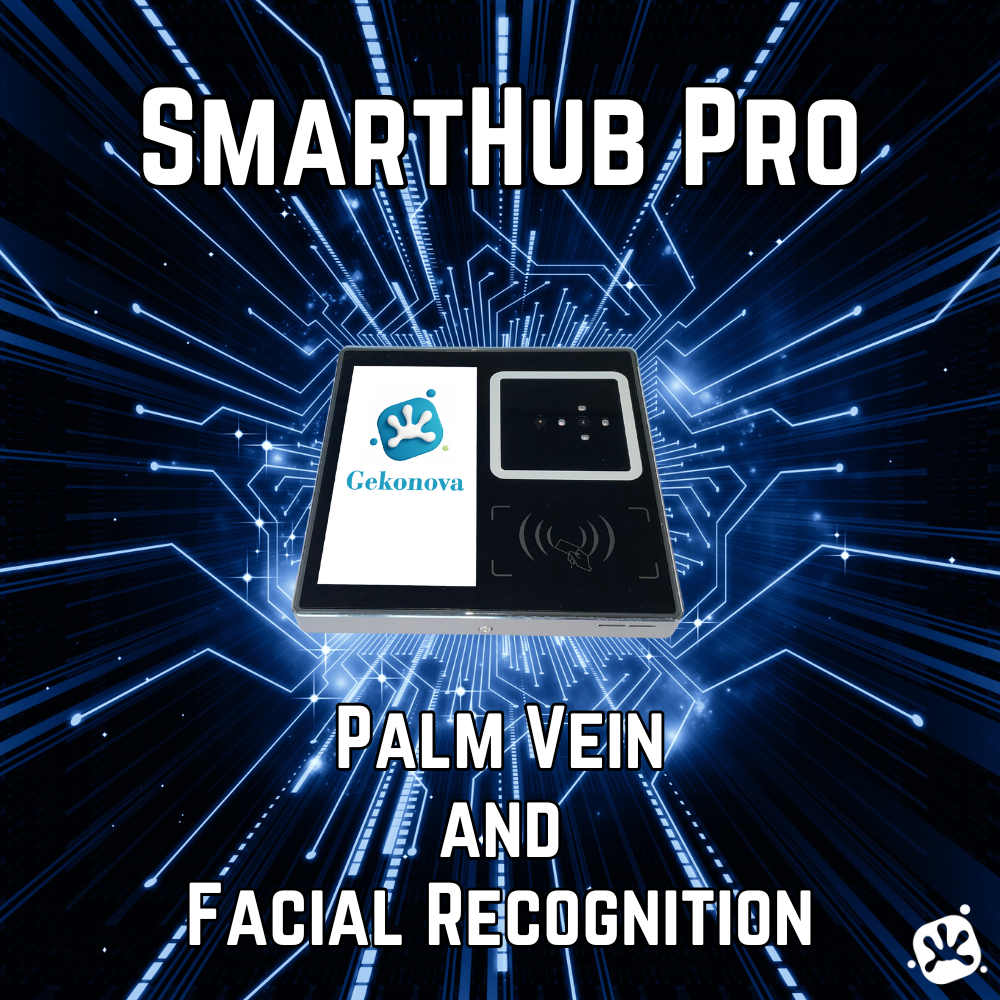Categories
As a provider of biometric solutions at Gekonova, I’ve seen firsthand the surge in demand for contactless biometrics since 2019, fueled by the need for hygienic, efficient, and secure identity verification. Among the options, facial recognition and palm vein scanning have solidified their positions as top contenders, blending user-friendliness, precision, and privacy.
In this article, I’ll dive into why these technologies are spearheading the contactless biometrics revolution, how they compare, and how to maximize their potential. Let’s explore their advantages, tackle their challenges, and peek into their promising future.

Contactless biometrics refer to authentication systems that identify individuals without physical contact, a critical feature in today’s hygiene-conscious world. These solutions are highly sought after by my clients in environments like healthcare facilities, transportation hubs, and retail spaces where minimizing contact is essential. Facial recognition and palm vein scanning stand out as the leading technologies in this domain, transforming how we balance security and convenience.
Facial recognition employs high-resolution cameras to analyze unique facial characteristics, such as the shape of your cheekbones or the width of your forehead, without any touch. Palm vein scanning uses near-infrared light to capture the intricate vein patterns beneath the skin of your palm, also entirely contactless. Both deliver rapid, reliable authentication, making them ideal for settings where speed and cleanliness are paramount.
From my work at Gekonova, I’ve observed that facial recognition and palm vein scanning consistently outperform other contactless biometrics. Here’s why they’re at the forefront:
Clients often ask me how facial recognition stacks up against palm vein scanning in the contactless biometrics landscape. Both excel, but their strengths align with different priorities. Here’s a detailed comparison to guide your decision:
Facial Recognition: Employs 3D mapping and infrared technology for reliable identification, though performance can vary with lighting or facial obstructions like scarves.
Palm Vein: Scans internal vein patterns, which are nearly impossible to replicate, offering unmatched security unaffected by external conditions.
Facial Recognition: May spark privacy debates due to its potential use in monitoring, but modern systems use encrypted templates to enhance data protection.
Palm Vein: Provides superior privacy as vein patterns are hidden and require active user participation, minimizing misuse risks.
Facial Recognition: Highly intuitive—users simply face the camera. It’s perfect for public settings but requires proper camera alignment.
Palm Vein: Involves a quick hand gesture, which is straightforward but may require brief user training. It shines in controlled environments like corporate offices.
Facial Recognition: Cost-effective and widely accessible, making it ideal for large-scale deployments in places like stadiums or retail stores.
Palm Vein: More costly due to specialized infrared technology but perfect for high-security sectors like finance or healthcare.
While facial recognition and palm vein scanning are top-tier solutions, I always discuss potential hurdles with clients to ensure informed decisions:

The outlook for contactless biometrics is exciting, with facial recognition and palm vein scanning poised for further growth. These technologies are already mainstream in Asia, particularly in Japan and China, for banking and public services.
Globally, adoption is accelerating—Singapore and the UAE are testing them in airports, while companies like Visa explore contactless payments. In the US, Amazon One’s palm-based systems are gaining traction in retail for seamless, private transactions.
Looking ahead, I expect AI advancements to boost facial recognition’s adaptability to diverse conditions, while cost reductions in palm vein technology will expand its reach. As privacy laws evolve, palm vein’s consent-based design may become a benchmark, and facial recognition will likely adopt stronger privacy features. For my clients at Gekonova, this signals a future where contactless biometrics remain secure, hygienic, and cutting-edge.
At Gekonova, I’m dedicated to helping clients adopt the best biometric identity solutions, and contactless biometrics like facial recognition and palm vein scanning are leading for their blend of hygiene, speed, and security. They’re ideal for applications from airport check-ins to secure office access and medical verifications. By understanding their benefits, addressing limitations, and implementing best practices, you can achieve a smooth, effective deployment. Whether your goal is enhancing safety or streamlining user experiences, these technologies offer a forward-looking, touch-free solution—let’s transform authentication together!